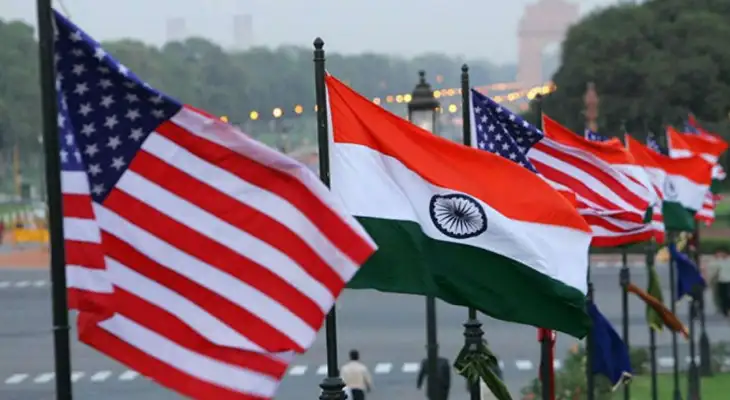India-US Trade Deal May Set a Global Benchmark – Here’s What a Report Says

India’s economy is on an impressive growth trajectory, driven by domestic consumption, rising employment, and stronger consumer confidence. Private investment is also increasing, spurred by government reforms and capital spending. As India strengthens its position in the global economic landscape, a significant development is the India-US Bilateral Trade Agreement (BTA), which could reshape international trade and become a model for India’s future agreements with other developed nations.
A report by ACMIIL, a stock market company, suggests that the India-US BTA will serve as a global benchmark, marking a shift in India’s trade strategy. The agreement not only boosts trade but also allows India to use it as a tool for acquiring advanced technologies, enhancing industrial growth, and securing a more prominent role in the global economy.
India’s Shifting Trade Strategy
India’s economic prospects are strong. The country’s consumption levels are climbing, supported by increasing employment and growing consumer confidence. Government reforms and tax changes have encouraged private investment, propelling India’s economic expansion. This combination of factors has positioned India as one of the world’s fastest-growing major economies.
The India-US BTA aligns with India’s goals, such as the “Make in India” and “Atmanirbhar Bharat” (Self-Reliant India) initiatives. These efforts aim to boost domestic manufacturing and reduce reliance on imports, making India more self-sufficient in critical sectors like technology, manufacturing, and defense.
The report highlights that this agreement could set a precedent for India’s future trade negotiations with other developed economies. By focusing on technology collaboration, industrial growth, and global supply chains, India is forging a new path in international trade.
Key Aspects of the India-US Bilateral Trade Agreement
The India-US BTA includes various benefits for both countries. India plans to reduce tariffs on several American agricultural and food products. This move will offer American exporters increased access to the Indian market, particularly in the food and agriculture sectors. It also gives Indian consumers a broader selection of food products at competitive prices.
In return, India will gain access to cutting-edge US technologies, particularly in defense, clean energy, and high-end manufacturing. These technologies are crucial for India’s long-term development and national security.
The agreement is also expected to enhance collaboration in areas such as defense. India has long sought advanced defense technologies to strengthen its security, and the BTA will allow for technology transfers and co-production agreements, playing a significant role in India’s defense strategy.
Broader Implications: Regulatory Cooperation, Digital Trade, and IP Rights
The BTA also addresses regulatory cooperation, digital trade standards, and intellectual property rights (IPR) enforcement. These provisions will establish a transparent, predictable environment for businesses. By simplifying regulatory processes, the agreement will foster cross-border investments and business stability.
The digital trade provisions are timely as they align with the growing global trend toward digital transformation in industries like e-commerce and fintech. Strengthening intellectual property rights will help protect innovation, encouraging further investment in technology and new industries.
India’s Economic Growth and the Global Shift
India’s economic growth is driven by several key factors. The country’s working-age population makes up 47% of its total, and as household incomes rise, consumption is increasing. People are spending more on convenience-based products, which is fueling demand.
The government’s initiatives have supported private investment, and India’s macroeconomic fundamentals remain strong. These factors position India for sustained growth, with projections estimating a 6.5% expansion in the financial year 2025-26.
India’s role in global supply chains is becoming more critical as businesses look to diversify their sources of production. With disruptions in global supply chains over the past few years, India is emerging as a reliable alternative for multinational companies seeking to reduce dependence on single-source suppliers.
As the world’s fastest-growing major economy, India is on track to become one of the top three global economies in the coming years. The India-US BTA is just one of many steps India is taking to cement its place in the global trade landscape.
Conclusion
The India-US Bilateral Trade Agreement has the potential to redefine international trade. By focusing on reducing tariffs, fostering technological collaboration, and enhancing regulatory standards, the BTA could set a new global benchmark. For India, this agreement is more than a trade deal—it’s a strategic move to boost industrial growth, improve technological capabilities, and strengthen its global position.
As India continues to grow, it is adopting innovative trade strategies, with the India-US BTA serving as a significant milestone in its journey. With its strong economic fundamentals, India is well-positioned to be a key player in the future of global trade.






